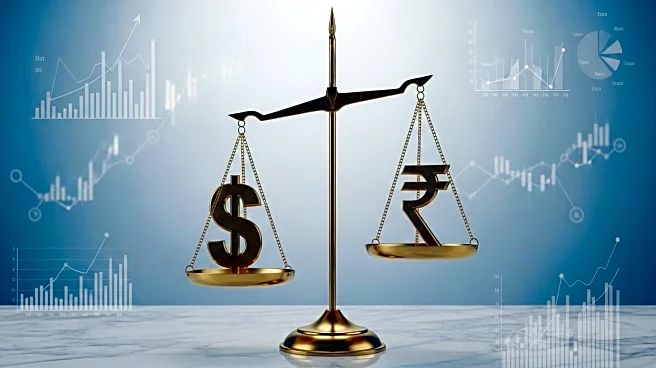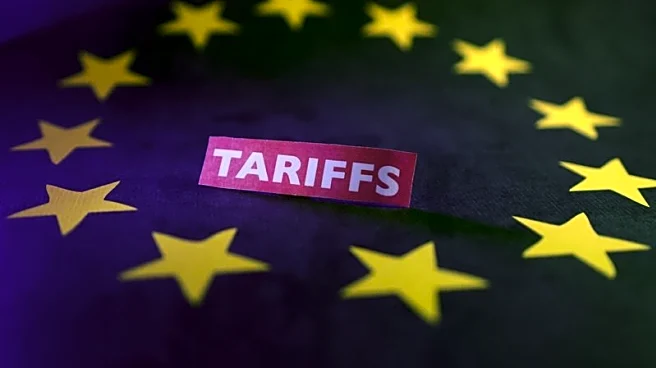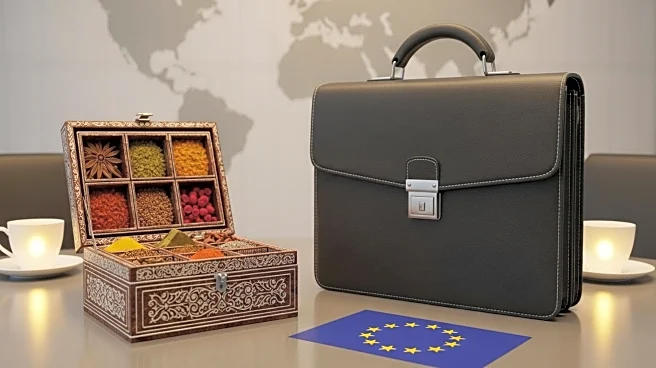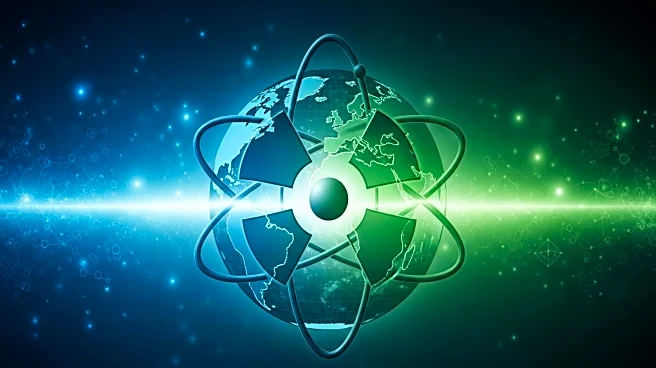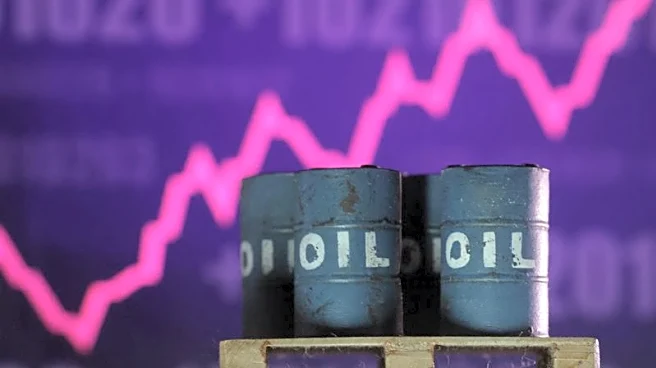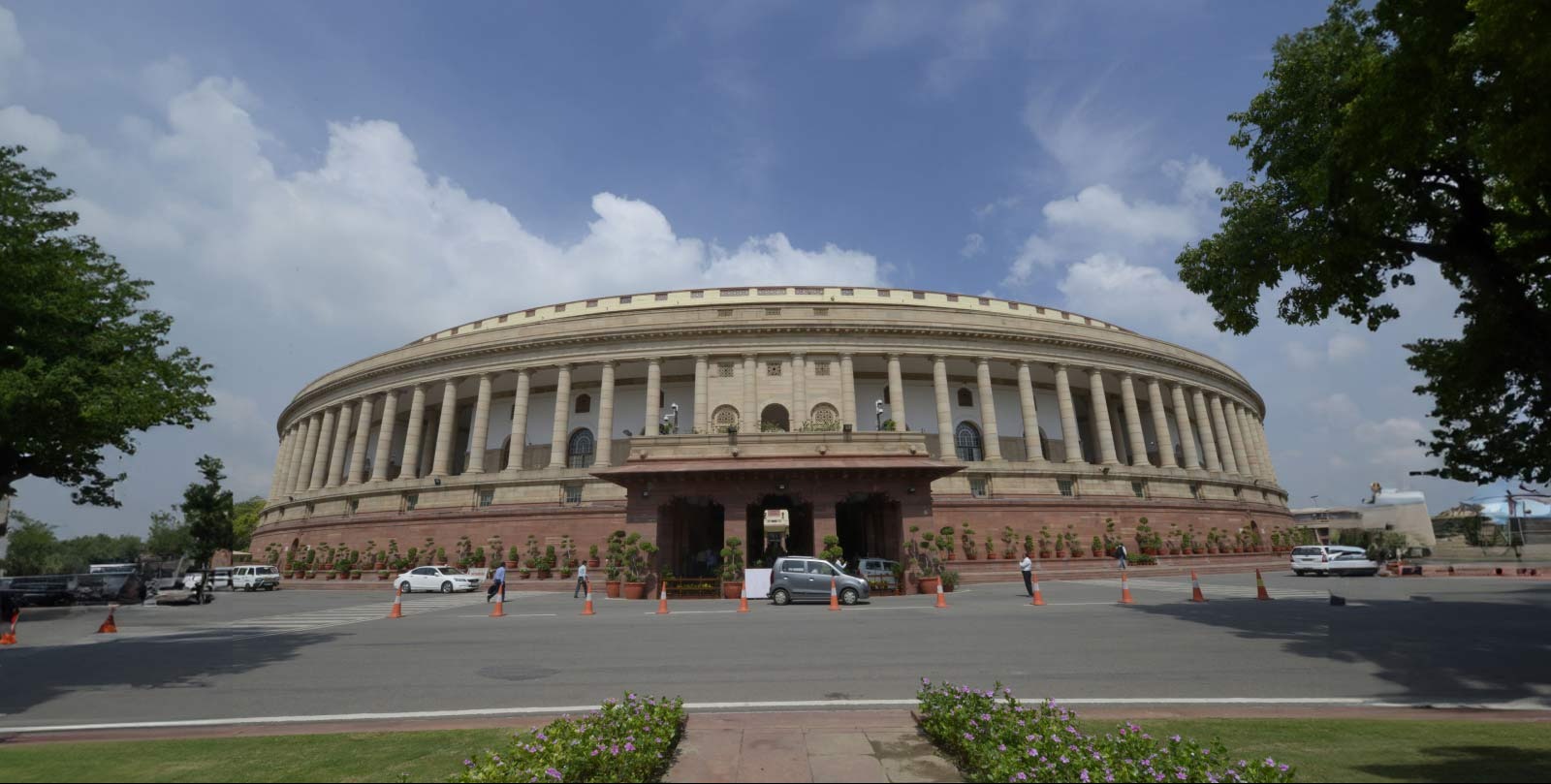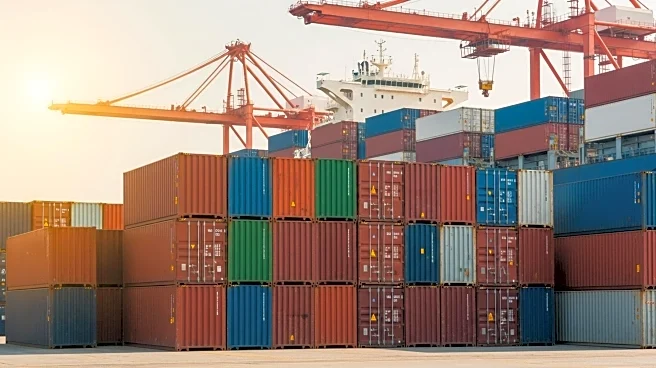What's Happening?
In April 2025, President Trump invoked the International Emergency Economic Powers Act, imposing a 10% baseline tariff on all imports, escalating to a 50% tariff on goods from India by late August. This move was linked to India's continued purchases of Russian oil. The tariffs have reignited trade tensions between the U.S. and India, with both nations exchanging conciliatory statements in early September, indicating potential resumption of trade talks. Prime Minister Modi emphasized the close partnership between India and the U.S., while President Trump suggested further tariff hikes against India and China to pressure Russia.
Why It's Important?
The tariffs imposed by President Trump have significant implications for the U.S. economy, which is already facing challenges such as sticky inflation and potential stagflation. The tariffs could lead to higher household costs and job losses, with estimates suggesting over 450,000 jobs could be affected. For India, the tariffs impact critical exports like textiles, pharmaceuticals, and electronics, eroding price competitiveness. The energy sector is also affected, with Indian refiners signaling reductions in Russian oil imports to avoid further sanctions. These developments highlight the geopolitical tensions and economic risks associated with tariff-based economic policies.
What's Next?
India is responding strategically by diversifying trade through free trade agreements with the UAE and UK, and recalibrating its energy security priorities. The U.S. and India may resume trade talks, as indicated by recent conciliatory statements. The broader geopolitical landscape may see shifts as India engages with Eastern powers and the expanded BRICS bloc, emphasizing multilateralism and local currency trade. The ongoing trade tensions could lead to further economic fragmentation and shifts in global value chains.
Beyond the Headlines
India's strategic autonomy is evident in its diplomatic engagements with West Asian countries, balancing relations with Iran, the GCC, and Israel. This approach reflects a new strategic equilibrium, where India navigates multipolar dynamics without isolationism. The global order is undergoing recalibration, with India offering a model of intelligent alignment and leadership in a fragmented geopolitical environment.
